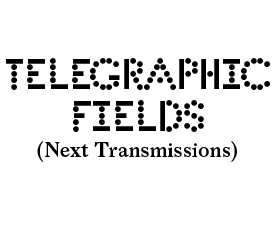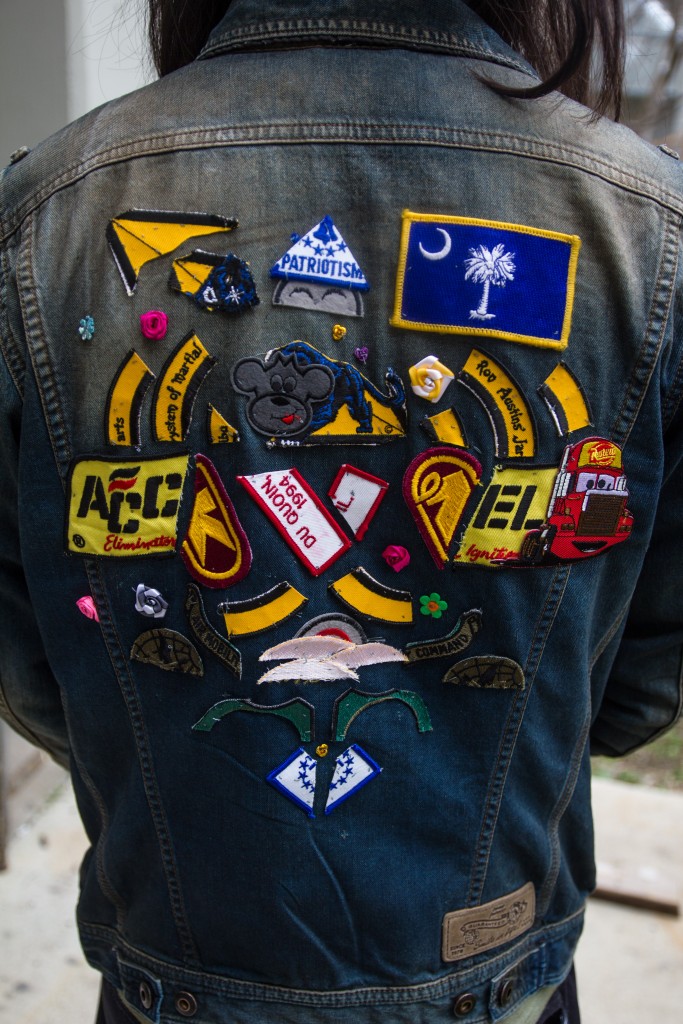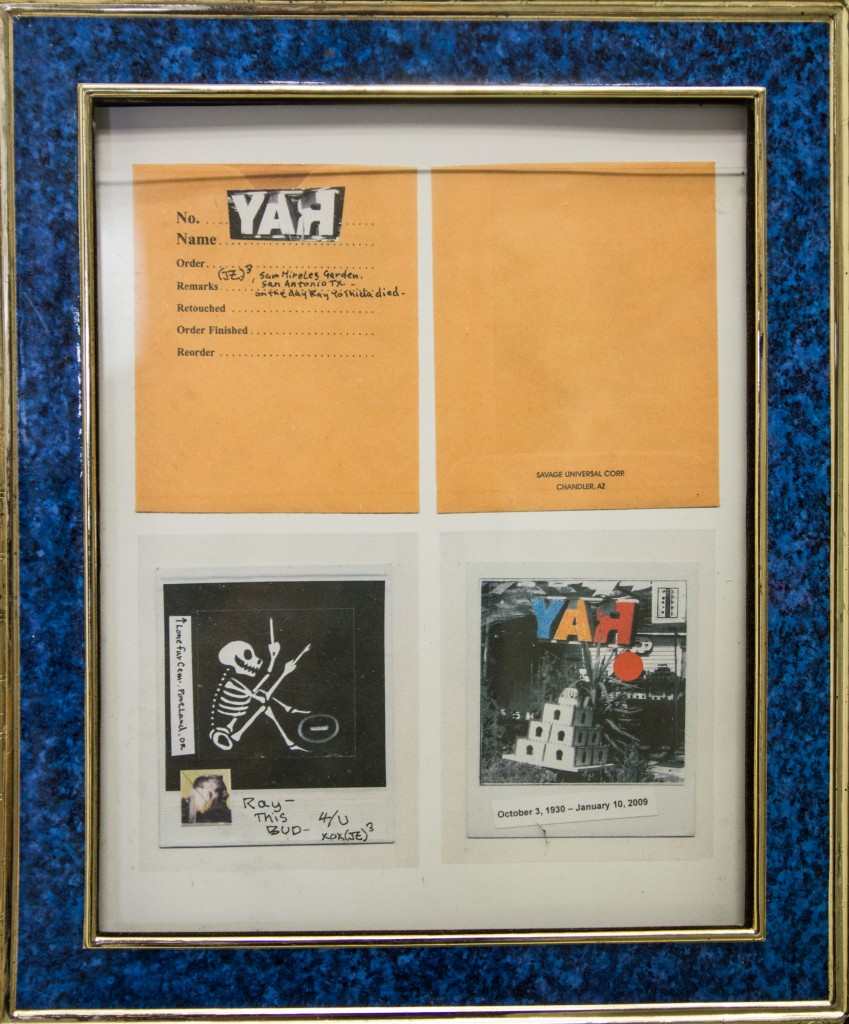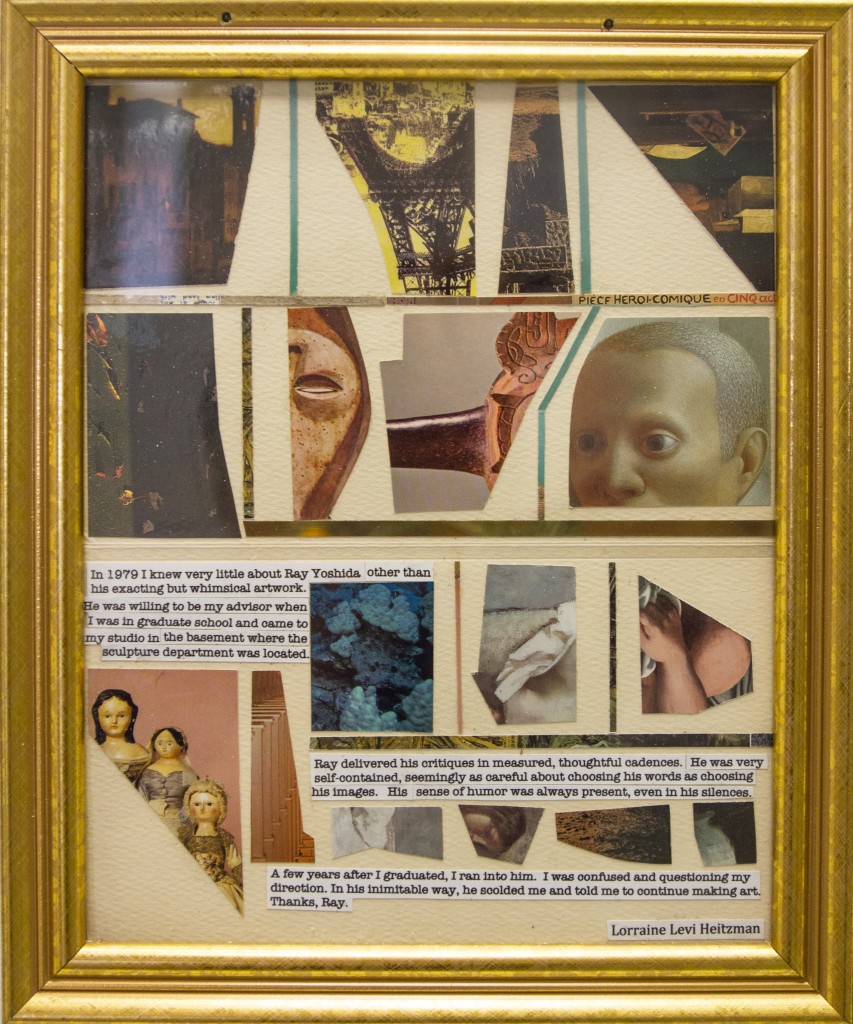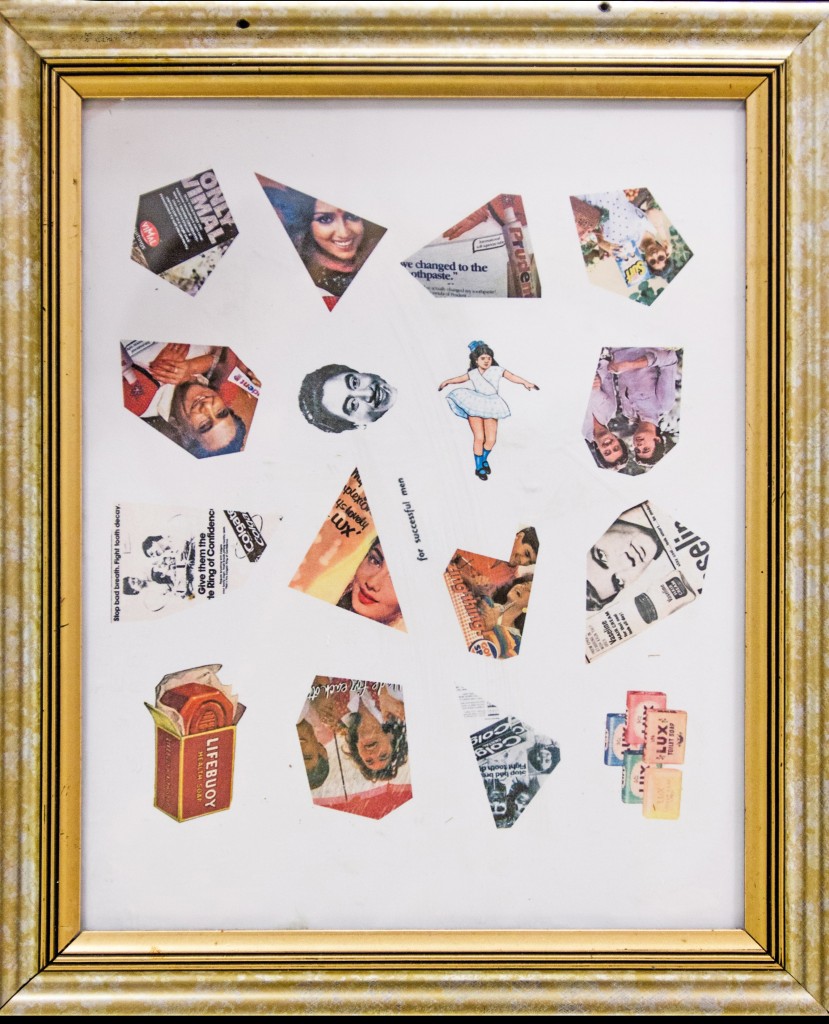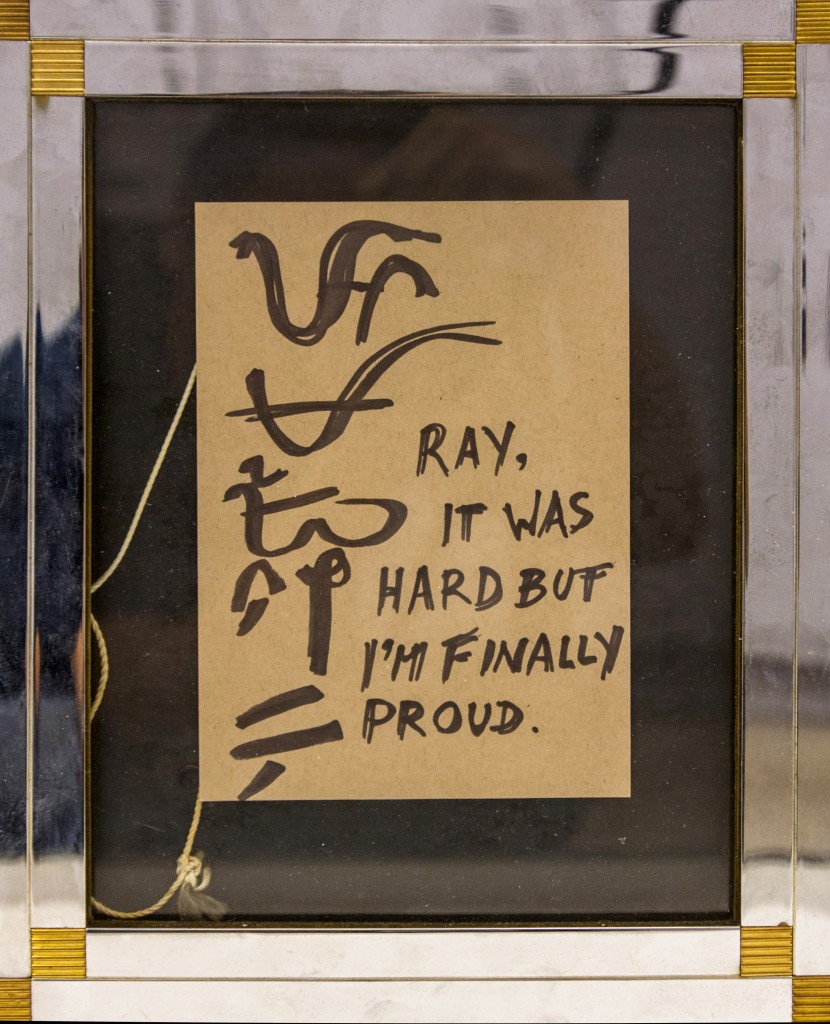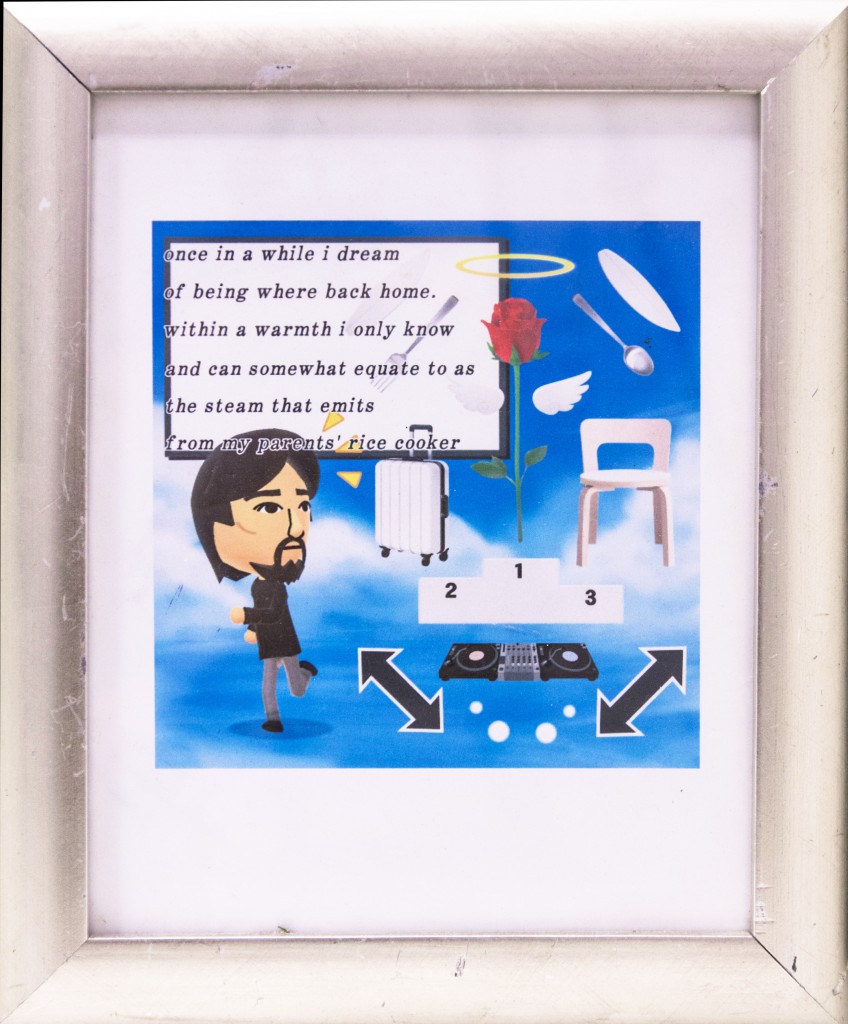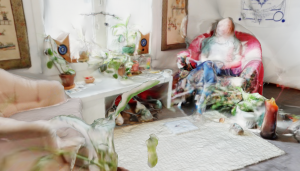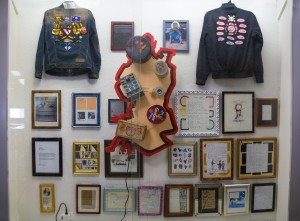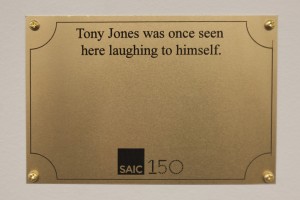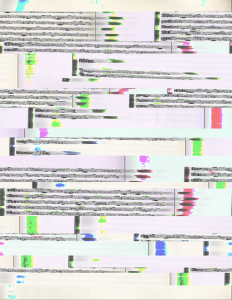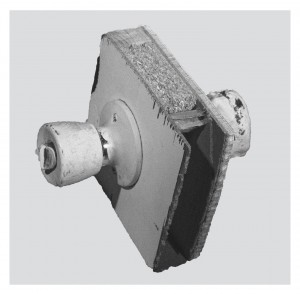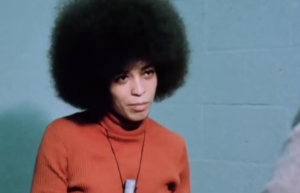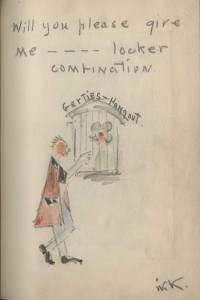Isara Koy Suntichotinun (BFA 2018) is a multi–disciplinary artist from Thailand who moved to the United States at the age of four. Koy is interested in inviting audience participation and creating objects that inform sensory stimulation besides the visual. He has worked in ceramics, painting, sculpture, typography, printmaking, web programming, 3d printing, and video, conditional to the concepts he is exploring.
Do You Dance When You Paint? And Who The Harry Is Ray Yoshida?
A continuation of a piece, a yearlong feat–cha
Privacy is important to Ray don’t you see
To interview his friends, privacy was the key
A set of written letters from his homies, each one a surprise
But to present Ray for 150, I must oblige
And for the empty frames…?
A decline for personal reasons
…
The letters on the right, NAMASTE (here) and AAASS (k)
Asian & Asian American Students @ SAIC
In shadow of Ray, a new generation of time
Proud American born of Japanese ancestry
SAIC community will hear from us again soon
Finally the objects, having Ray as a guide
My discipline collides with imagists throughout time
Learning from the people who knew him well
Making objects to stand by, stand own, stand tell
Hopefully Ray doesn’t think I’m too much of a fool.
Will you write a letter to Ray Yoshida?
Yet racism will never subside
In support of each other is all we can do
Wishing the best is the best I can do
“Surprise him or make him laugh”
or do both!
Previously On View: A showcase near Gallery X, 280 S. Columbus Dr.
My interest in Ray Yoshida strung from my interest in Roger Brown, which was someone I discovered freshman year at SAIC. I grew up knowing my father to be a collector; I remember growing up and hearing my mother complain about all the ‘junk’ he would bring home. He would collect maquettes of old appliances such as miniature pots, pans, stoves, record players, cars, as well as Star Wars figures, 7–eleven special design cups, horror movie statues, and other knick– knacks. Looking back now, I’m not sure if my interests in my father’s collection simply exists because of past steps but I don’t dawdle too deep into those thoughts. All I know now is that I too have the same interests; I collect toys following a loose but specific aesthetics of objects usually relating the 60s through 80s but I never saw my collections much as an art practice. Discovering Roger Brown, I realized that I should take notice to the objects I collected; even to a non–collector there are certain themes all people find interests in and people like Ray and Roger do nothing more than emphasize that factor. Art making is object making, even within the digital or auditory realm, you take certain interests and manufacture a form that viewers can attempt to comprehend. I know personally I have a hard time understanding what I enjoy without comparing to other real world events; I need something tangible in order to understand myself. My collections embody who I am as a person, though I don’t directly recreate the objects I love, I have something that is less obscure as an idea and something more corporal such as collected doohickeys.
To transition from Roger Brown I decided to research more about Ray Yoshida not only because I know Ray to be the main inspiration for the Chicago Imagists but because of his identity of being an American of Japanese ancestry. A simple task at first but I never realized that I would soon discover that there wasn’t much to find involving Ray that was easily assessable. I went to three separate libraries in SAIC and after a couple of head turns and “who?” I was only able to find five catalogues involving the infamous artist. It was a nice start but I was craving something more; having been to the Ed Paschke Gallery as well as the Roger Brown House I expected the teacher of all people to have some form of a physical archive. My interest in Ray didn’t just come from his work but also from his personal values. I was interested in Roger because I felt like I knew Roger from a personal perspective rather than from an academic standpoint and I wanted the same for Ray. I later discovered that some of Ray’s archives are located in the Kohler Arts Center as well as Elmhurst College. I didn’t have time to go to these locations so instead I began doing my own research on past alumni and faculty who knew Ray in some fashion. After a couple of interviews I found Ray to be a private person so in order to ensure that I introduce Ray in a way that wouldn’t be offensive, I requested letters from the people I interviewed that introduced Ray in some form but could be as cryptic as they would like. I only received four letters since many of the people I interviewed felt uncomfortable with the idea of exhibiting Ray in such as personal manner.
I made two installations; one was a single sculpture piece of a suitcase and a coffee table connected together via a Lazy Susan and another being a large– scale motor piece installation involving multiple tin containers. The two pieces involved some form of found objects; I myself am not much of a painter but I wanted to capture Ray in some way with the information I learned from my interviews. During my early process, it felt natural for me to work within Ray’s restrictions. Being in flea markets and antique stores was something that I was used to and I found enjoyment in embodying content within thrown away possessions. Ray reminded me of a container; a container is something many people are curious to open but many never actually enact on the action unless it is something personal. Ray balanced between being boisterous and proud while reserved and solitary, every interview had a different perspective of Ray, some knew him to be a dancer who loved The Supremes while other knew him as a faculty member, a few steps behind and subtle waves; just as a container, unless you know the owner, it would be rude to open without permission.
My first piece involving the Lazy Susan is titled Who The Harry Is Ray Yoshida? which was my own beginning introduction to Ray as well as my first test in audience participation. I incorporated the Lazy Susan so when people are first introduced to the sculpture, when they read the tag that they can touch the piece, they can become acquainted by the spinning of the box. I left the key attached next to the lock of the box to give hints to the few that they are allowed to open the box, when opening the box a light turns on inside that gives the audience a sense of confirmation and accomplishment. The exterior of the box serves as the outside perspectives of Ray and the interior consists of donated found objects with my personal letter inside, which signifies my own perspective and present past objects from owners that found value in them, allowing people to empathize with Ray in some form and also stray the perspective away from just my own.
My second iteration Do You Dance When You Paint? is one of complications. I never worked on a long–term project before and for the most part I was extremely burnt out on Ray Yoshida. Not much because I was tired of Ray as a person, but I was tired of interviewing Ray’s colleagues. I was a bit distressing at times having to interview people that were so suspicious of my actions of interviewing someone as Ray and the pressure to receive their letters were just as difficult. I felt like I was completely stranded on an island with no foundation. It wasn’t until I had one interview who gave me a new perspective on Ray, they gave me support and was the person that coined the term, “Do you dance when you paint?” which was one of the enigmatic questions Ray would ask. They told me that Ray was interested in works that made him laugh as well as surprise him and if you are able to do both, you have captured Ray’s heart. They pushed me to incorporate myself within my work and to stray away from just Ray himself because I’ve become so fixated towards a particular subject. So I decided to take a weekend off in Kansas City, Missouri to find some inspiration and what I discovered were vintage toys, neon signs, and spinning advertisements. Coming back I decided to take my findings into my art practice and made a piece that did nothing more than spin tin boxes with a gear motor. I also decided to incorporate a side project I originally considered separate and combined the two ideas together which is taking my collection of sew–on patches and making compositions out of them by cutting them into pieces. I took inspiration from Ray’s comic cutouts and created a narrative based on my experience in South Carolina as well as another speaking about the racism against people of Japanese descent during the 60s and 70s when the automotive industry was transitioning overseas. Finally I went back to my letters to Ray Yoshida and decided to place empty frames for the people who declined writing a letter since that is a form of introducing Ray but to compensate for the lack of support, I decided to incorporate a student group I’ve been working with called Asian & Asian American Students @ SAIC. The student group serves as a way for people of Asian descent to find safety and infrastructure for them to speak on political issues involving the school as well as any other concerns. I felt that Ray would have been a much louder person if he didn’t face so much racism throughout his lifetime though based off an interview; one person told me that Ray was very proud to be a person of Japanese ancestry and I wanted to give support to Ray and have the group stand in solidarity and in homage to Ray. So I requested AAASS members to write letters to Ray as well which inevitably over–casted the empty frames of Ray’s colleagues; I received five letters from people who knew Ray and thirteen letters from Asian & Asian American Students @ SAIC. Though many of these mediums do not directly reflect Ray’s practice, they embody Ray’s ideology and in that regard, I feel much more proud of my own work and feel that my support for Ray is much more honest.
So “Who The Harry Is Ray Yoshida?” Ray was many things; he was an artist, teacher, scholar, dean of graduates, collector, honestly I’m still not exactly sure who Ray is. I only know Ray through other people so my knowledge is very filtered by my research has helped me understand myself a lot more. Though what I was working on meant to pay homage to Ray, much of my work for the most part felt natural to me. Though I will never know Ray completely, I hope he is a little bit proud; also yes, I do dance when I paint.
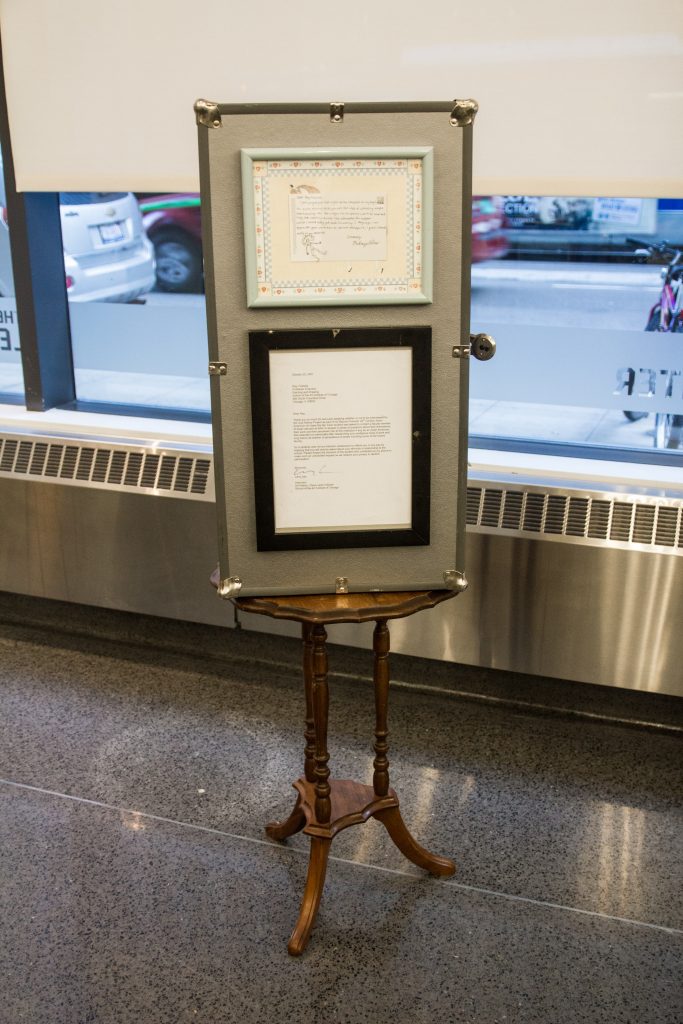 Who the Harry is Ray Yoshida? 2015, Suitcase on a coffee table filled with a collection of items and and covered in letters written to Ray Yoshida.
Who the Harry is Ray Yoshida? 2015, Suitcase on a coffee table filled with a collection of items and and covered in letters written to Ray Yoshida.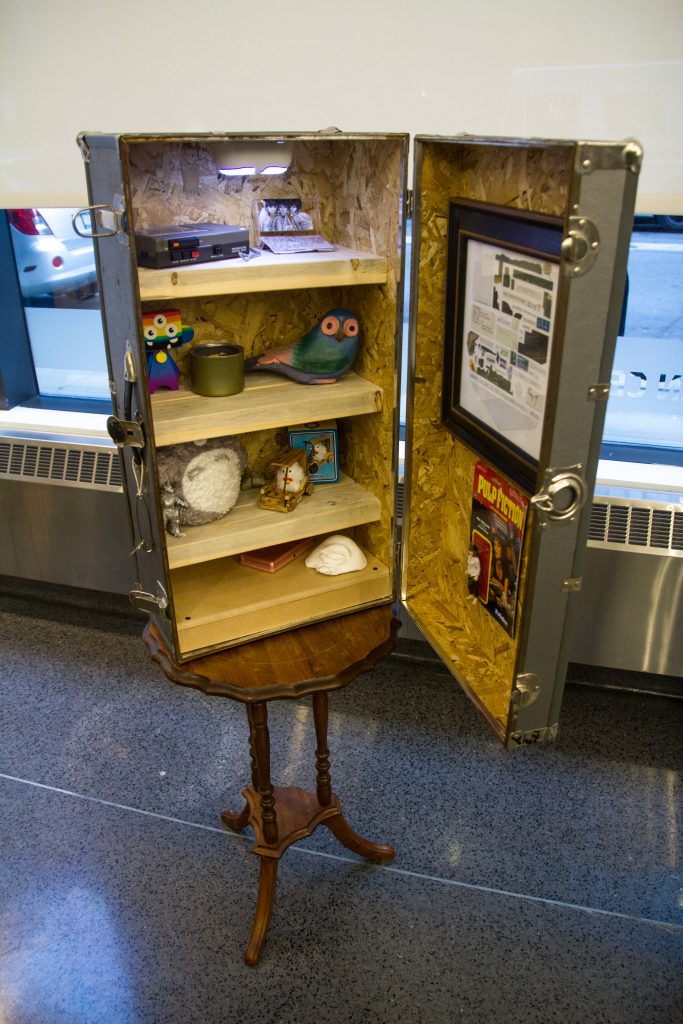 Who the Harry is Ray Yoshida? 2015, Suitcase on a coffee table filled with a collection of items and and covered in letters written to Ray Yoshida.
Who the Harry is Ray Yoshida? 2015, Suitcase on a coffee table filled with a collection of items and and covered in letters written to Ray Yoshida.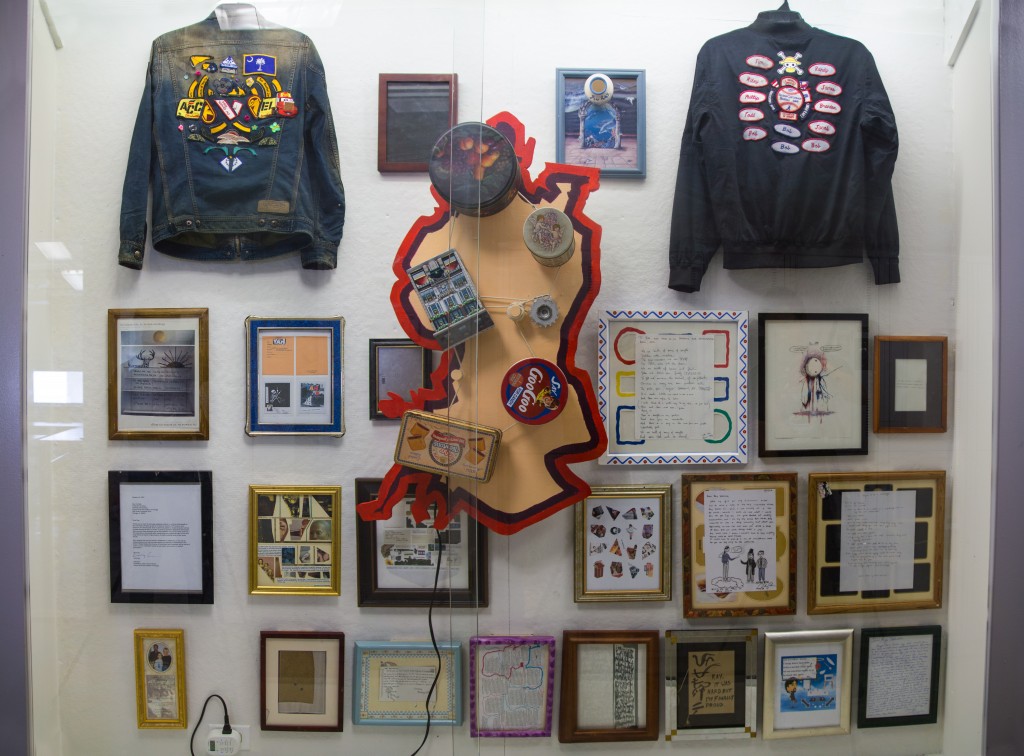 Do You Dance When You Paint? 2016, Wood, acrylic, tin container, gear motor, rope, PLA print, bearing.
Do You Dance When You Paint? 2016, Wood, acrylic, tin container, gear motor, rope, PLA print, bearing.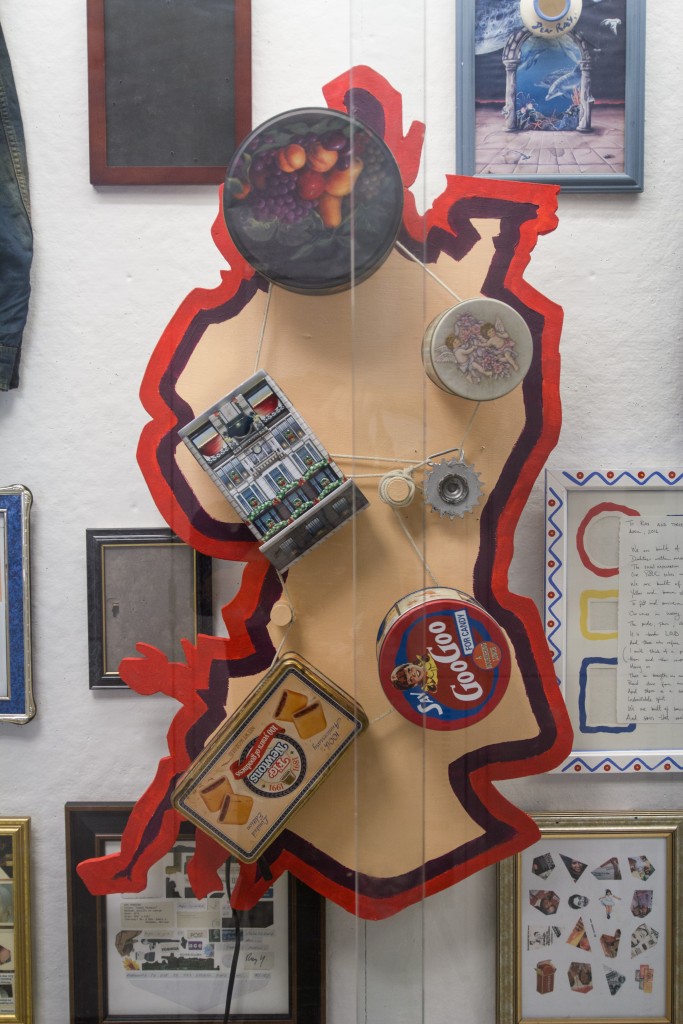 Do You Dance When You Paint? 2016, Wood, acrylic, tin container, gear motor, rope, PLA print, bearing.
Do You Dance When You Paint? 2016, Wood, acrylic, tin container, gear motor, rope, PLA print, bearing.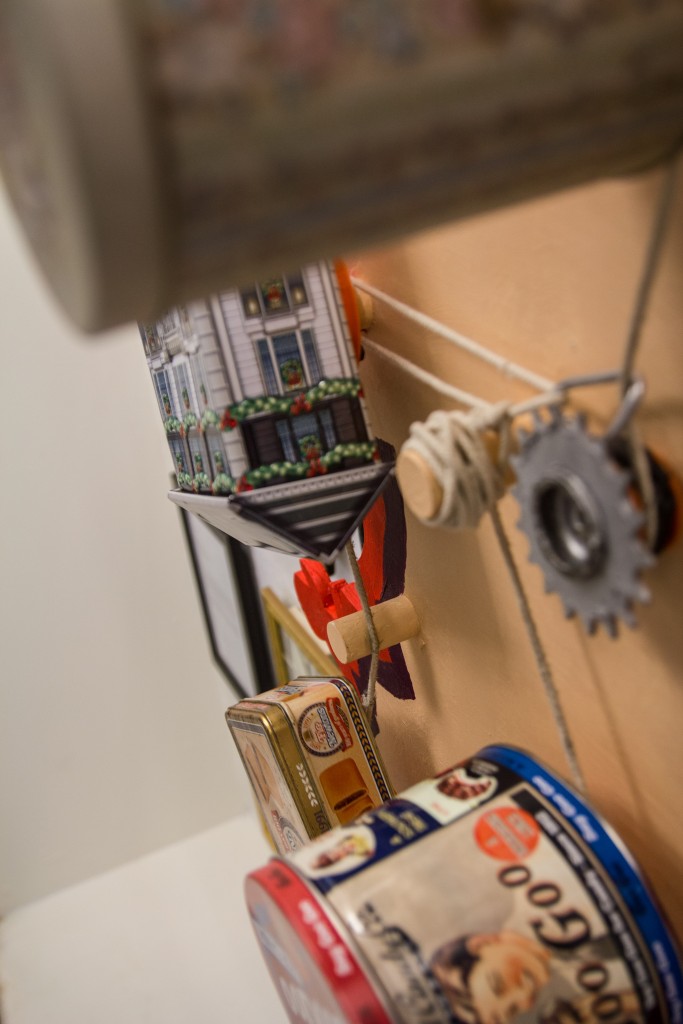 Do You Dance When You Paint? 2016, Wood, acrylic, tin container, gear motor, rope, PLA print, bearing.
Do You Dance When You Paint? 2016, Wood, acrylic, tin container, gear motor, rope, PLA print, bearing.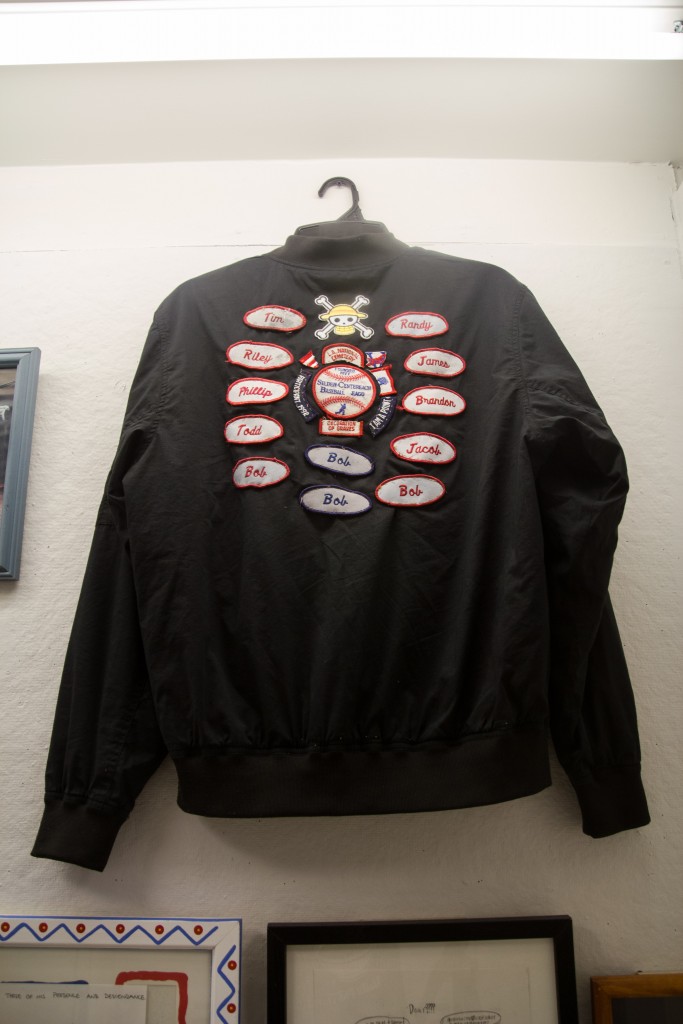 Do You Dance When You Paint? (Nuclear Family), 2016, Used American Factory Worker Name Patches, One Piece Patch, Misc found patches.
Do You Dance When You Paint? (Nuclear Family), 2016, Used American Factory Worker Name Patches, One Piece Patch, Misc found patches.